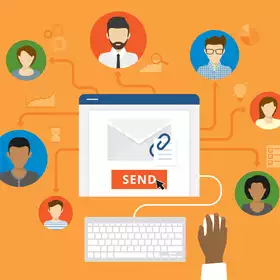
One of the most important parts of a salesperson’s job is building trusting relationships with prospects.
Drip campaigns are one of the most efficient tools to accomplish that. A drip campaign is a series of automated emails sent over time.
The goal is to sustain a regular cadence of communication with a prospect. These personalized notes develop a familiarity between prospect and salesperson, and can serve as the foundation for converting prospect into customer.
Drip campaigns may seem simple enough, but there are strategic elements to focus on with regard to the content, timing and resulting data. Here are important tips to keep in mind before executing:
Content
Personalization in sales outreach is now expected, not just encouraged. Long gone are the days where one generic email blast would lead to deals. Now, they lead to spam folders. Meanwhile, personalized emails generate nearly 50 percent higher open rates and roughly 22 percent higher reply rates. The case is no different with drip campaigns.
When writing the content of your drip campaign emails:
- Do send personalized emails, even if they don’t directly reference products or services. Use a prospect’s promotion, sports team win or industry news as a way to connect and show interest beyond the sale. These relationship-building touchpoints foster long-lead opportunities and can result in more loyal customers. If a prospect is treated as a number, they’ll treat the salesperson in kind, an expense, instead of a strategic partner.
- Don’t send generic marketing content. A salesperson’s role is to connect with prospects, understand their needs and find ways to add value. “Automated” does not equal “generic”. Always ask, “How will this help my prospect?” If there isn’t a clear way to tailor content to a prospect’s specific situation, it should not be shared.
Timing
The time of day that an email is sent strongly affects the likelihood that it will be read, well-received and, most importantly, remembered. After carefully crafting a personalized drip campaign, salespeople should take care that their timing doesn’t undermine the content.
When scheduling the automated follow-ups:
- Do schedule the emails for distribution early in the morning, between 6 a.m. and 7 a.m., or in the evening after 8 p.m. These times are the most likely to get a response. Also, consider scheduling a touchpoint on the weekend. Open rates are highest on Saturdays and Sundays when there’s less competition in a prospect’s inbox.
- And always remember: check the recipient’s time zone when scheduling.
Don’t rule out scheduling emails for three-day weekends. On holidays like President’s Day, Memorial Day, and Labor Day open rates are similar to any other Monday. The difference: fewer emails are being sent. Don’t miss an opportunity to stand out by going silent on these federal holidays.
Data
Drip campaigns are scheduled in advance, but that doesn’t mean they can’t be changed. No email is etched in stone until it’s sent. Like any other strategy, salespeople should evaluate how emails are performing and adjust based on the insights they gather.
When evaluating drip campaign performance:
- Do monitor open, reply and bounce rates. By comparing open and reply rates of various emails, salespeople can understand which templates work best and which should be changed. They can also note which emails “bounced” so they don’t continue to send drip content to email addresses that rejected emails in the past.
- Don’t expect 100 percent open rates. While drip campaigns are an effective way to build relationships, that doesn’t ensure every email will be opened. Keep in mind that the average open rate of a cold email is 23 percent. That means less than one in four emails will be opened, and even fewer will generate replies. Don’t be discouraged—automated drip campaigns allow an efficient distribution of content and will set any salesperson up for success.
In 2015, 205 billion emails were sent each day. Email communication is still king despite the proliferation of other services, and sales people must optimize their email strategy in order to compete in the noisy inboxes of prospects.
Drip campaigns are an efficient way to ensure that salespeople foster relationships with prospects despite the need to facilitate several touch points in order to create trust and break through a crowded inbox.
Source: Business


